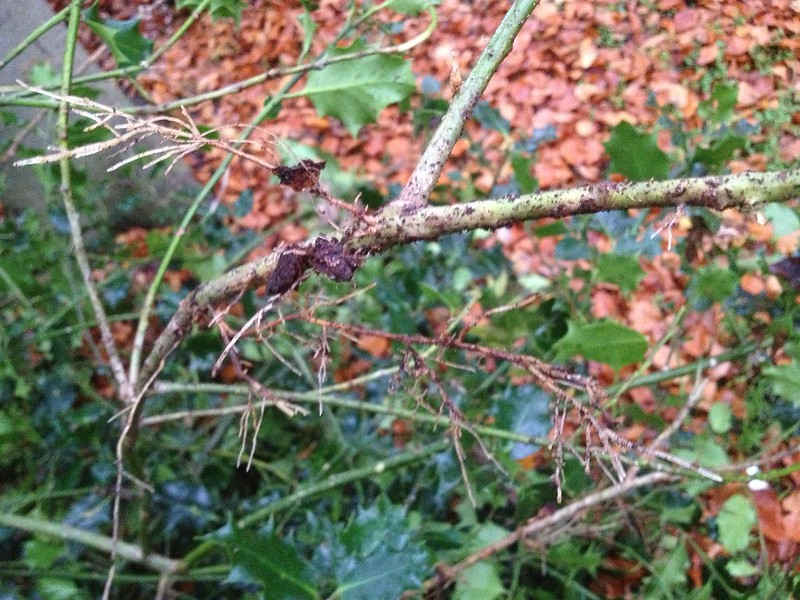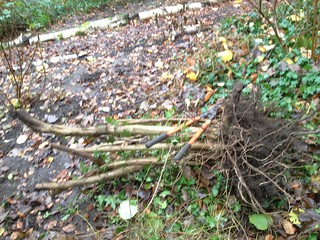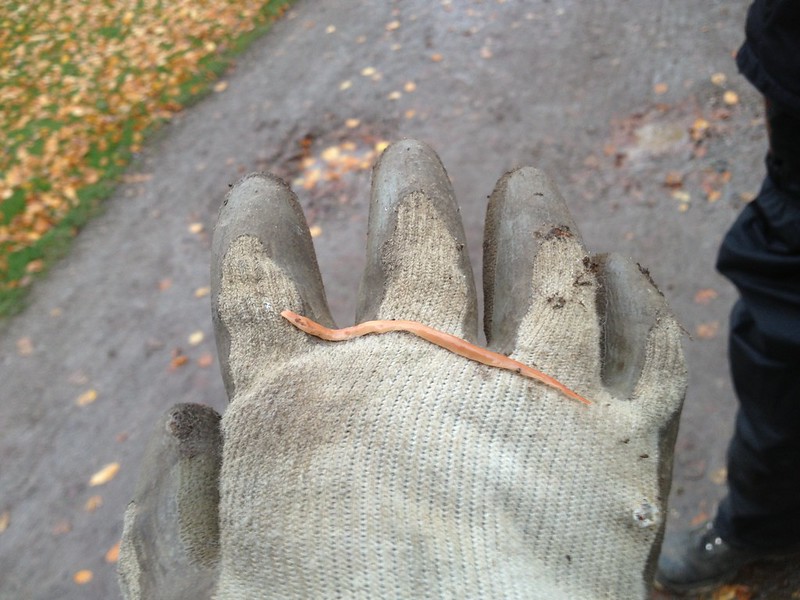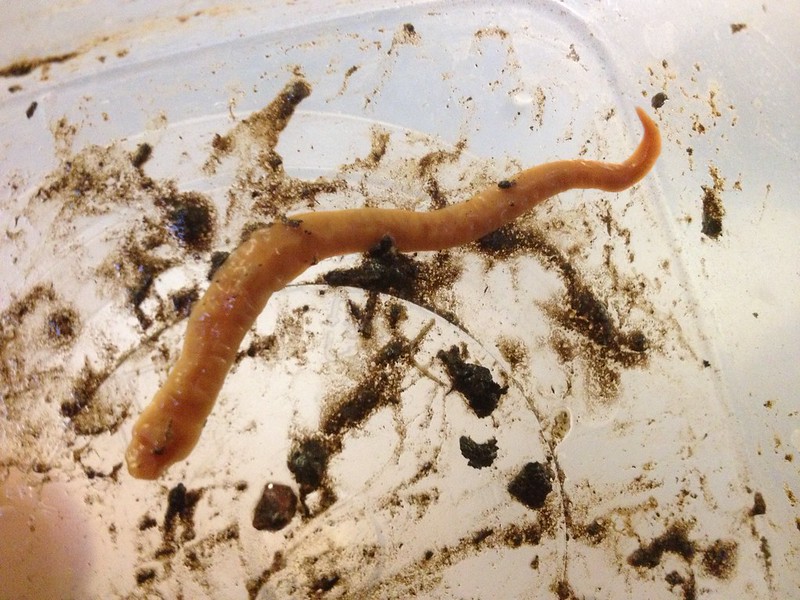 |
| One of the hollies that we removed |
 |
| Holly layering itself |
It was hard work, and I really enjoyed the sawing away, and the digging out of stumps as we removed two hollies (they do layer themselves under leaf litter, as I learnt!),
three sloes and a hazel stump.
 |  |
| Sloes halfway through the clearing | Hazel stump |
There was one more reason why I was particularly keen to work on holly at this particular time of the year: Christmas wreaths. Since my days at school when we were thought by our German teacher how to make them, I have enjoyed this festive activity.
 |
| One of the wreaths at home |
While we were busy hacking away, we received an unexpected visit from a colleague with a surprise: he had found a flatworm, and he know I might be interested to see one.
There are two species of flatworm that are not natives of the UK: the New Zealand flatworm (Arthurdendyus triangulatus), and the Australian flatworm (Australoplana sanguinea) and it is an offence under Section 9 of the Wildlife and Countryside Act 1981 to release any of those in the wild once they have been found. It is not exceedingly good news to find these two flatworms anyway, because they feed on earthworms, one of the soil's best aerators.
We identified our find as the Australian 'offender' so we boxed it up for sending to our P&D lab for further action. It is important not to touch the flatworms as their mucus can be irritating, so here it is in its full glory on my glove (and then again in its box), for anyone that might be interested to see one.
 |
| Australian flatworm (Australoplana sanguinea) |
 |
| Australian flatworm (Australoplana sanguinea) |
No comments:
Post a Comment